 by our College Data Analytics Team
by our College Data Analytics TeamPFW total enrollment is approximately 8,093 students. 5,161 are undergraduates and 163 are graduate students.
Male/Female Breakdown of Undergraduates
The full-time PFW undergraduate population is made up of 51% women, and 49% men.

For the gender breakdown for all students, go here.
PFW Racial/Ethnic Breakdown of Undergraduates
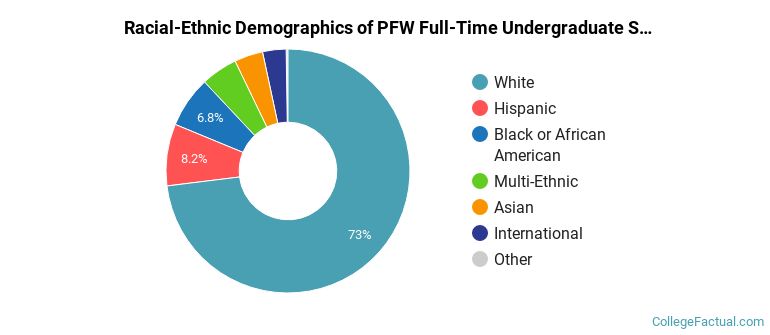
| Race/Ethnicity | Number |
|---|---|
| White | 3,679 |
| Hispanic | 499 |
| Black or African American | 376 |
| Multi-Ethnic | 242 |
| Asian | 217 |
| International | 133 |
| Unknown | 7 |
| Native Hawaiian or Pacific Islander | 2 |
See racial/ethnic breakdown for all students.
Male/Female Breakdown of Graduate Students
About 47% of full-time grad students are women, and 53% men.
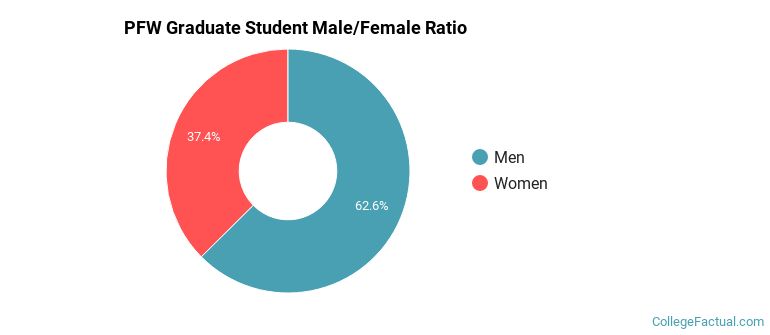
For the gender breakdown for all students, go here.
PFW Racial-Ethnic Breakdown of Graduate Students
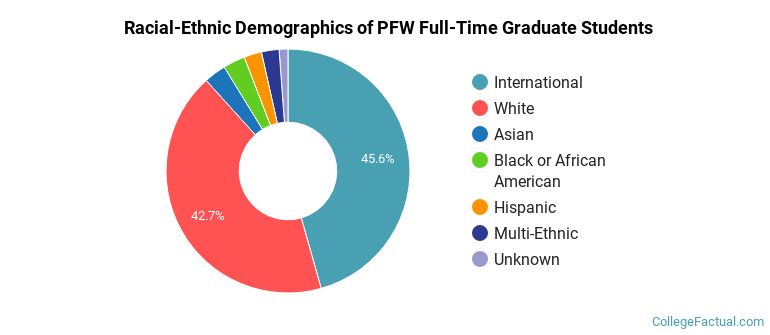
| Race/Ethnicity | Number |
|---|---|
| International | 71 |
| White | 67 |
| Black or African American | 9 |
| Asian | 6 |
| Hispanic | 6 |
| Multi-Ethnic | 4 |
| Native Hawaiian or Pacific Islander | 0 |
| Unknown | 0 |
See racial/ethnic breakdown for all students.
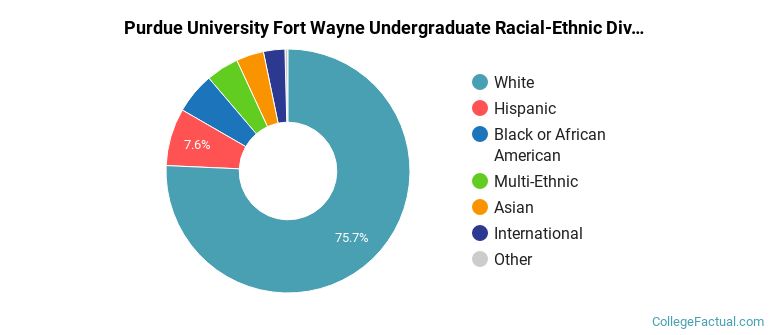
| Race/Ethnicity | Number |
|---|---|
| White | 5,950 |
| Hispanic | 698 |
| Black or African American | 506 |
| Multi-Ethnic | 340 |
| Asian | 315 |
| International | 246 |
| Unknown | 25 |
| Native Hawaiian or Pacific Islander | 4 |
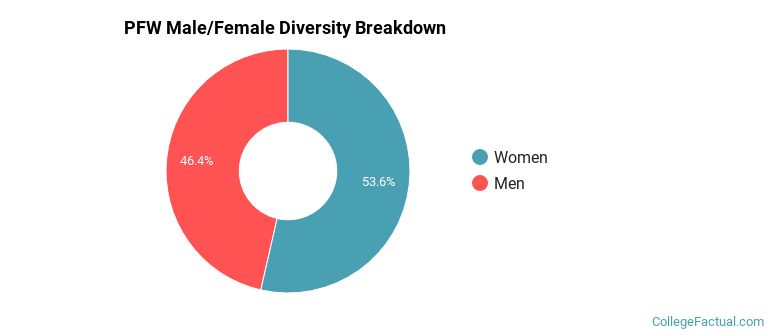
There are approximately 4,261 female students and 3,832 male students at PFW.
PFW ranks 1,558 out of 2,183 when it comes to geographic diversity.
6.48% of PFW students come from out of state, and 0% come from out of the country.
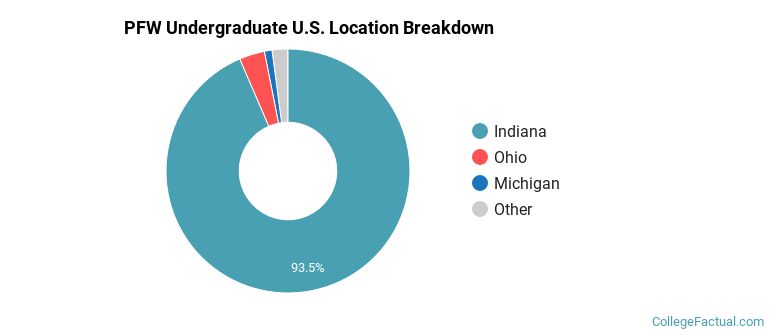
The undergraduate student body is split among 17 states (may include Washington D.C.). Click on the map for more detail.
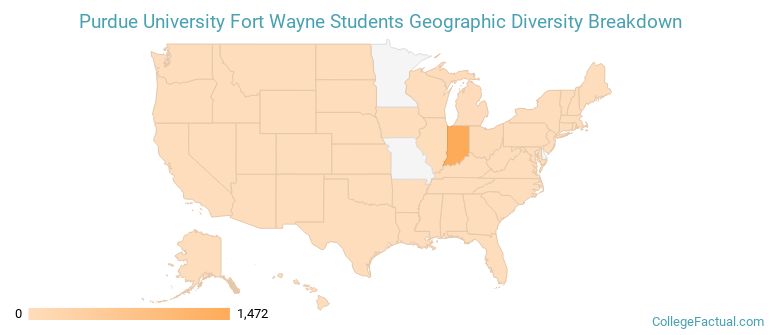
| State | Amount |
|---|---|
| Indiana | 1,472 |
| Ohio | 53 |
| Michigan | 16 |
| Illinois | 10 |
| Florida | 4 |
Learn more about international students at PFW.
A traditional college student is defined as being between the ages of 18-21. At PFW, 44.95% of students fall into that category, compared to the national average of 60%.
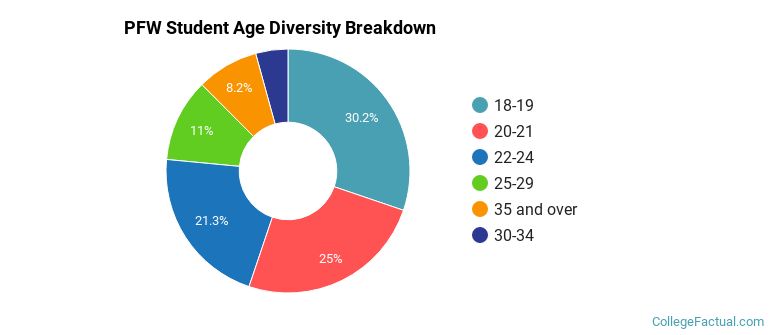
| Student Age Group | Amount |
|---|---|
| 18-19 | 2,564 |
| 20-21 | 2,117 |
| 22-24 | 1,810 |
| 25-29 | 934 |
| 35 and over | 696 |
| 30-34 | 363 |
| Under 18 | 0 |
Footnotes
*The racial-ethnic minorities count is calculated by taking the total number of students and subtracting white students, international students, and students whose race/ethnicity was unknown. This number is then divided by the total number of students at the school to obtain the racial-ethnic minorities percentage.
References
Department of Homeland Security Citizenship and Immigration Services
Image Credit: By Abhijitsathe under License
Find out how College Factual created their Diversity Rankings.